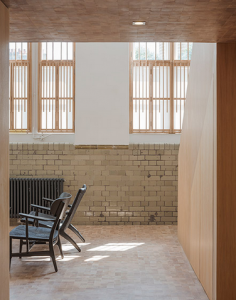What people want when constructing a new home is something that reflects their personality. Ours is a team that has plenty of experience in making this happen. For more than a decade, we’ve had the chance to work with various clients on all kinds of homes. You may want to work with the top business excelling in residential architecture London has. If so, you’re in the right place.
Are there dangerous materials in your home?
 Hazardous construction materials can contain synthetic or natural chemical substances. They are harmful to the environment as well as humans. Though very toxic, we can hardly test these chemicals or smell them. Sadly, many still reside in our living spaces.
Hazardous construction materials can contain synthetic or natural chemical substances. They are harmful to the environment as well as humans. Though very toxic, we can hardly test these chemicals or smell them. Sadly, many still reside in our living spaces.
The issue here is the chemicals enter our bodies via inhalation, ingestion, or skin contact. The extent and nature of health risks due to contact with the mediums depends on how long we are around them. Exposure level is also significant. In the worse cases, they can cause serious illnesses.
Based on progressing scientific knowledge, the list of hazardous construction materials changes often. But, the International Living Future Institute (ILFI) currently lists a lot of them. The following are some to take note of. You should ensure you don’t use them in your home.
Lead
This is a heavy metal that can be in plumbing pipes, paints, and roofing. It is poisonous and can be absorbed into the blood. Lead gathers slowly in the soft tissues and bones, eventually ruining the nervous system. Close contact can result in health issues like kidney damage and brain disorders. You should avoid it at all costs.
Halogenated flame retardants
These are chemicals included in construction materials during manufacturing. Their purpose is to slow down or prevent the spread of flames. They do this by restricting chemical reactions that support combustion. In some cases they form a protective layer instead. However, when they heat up, the retardants deteriorate into toxic gas. This then mixes with dust and enters the body via inhalation or ingestion.
Fibreglass
This is a popular material for thermal insulation and is often found in roofing and lofts. Exposure to it is most prevalent among people that chop, trim, cut, and sand the fibreglass. Such actions generate dust that mixes with the air and other dust, and finds its way into the body. This causes multiple forms of irritation and can damage the respiratory system. Thus, it is vital to be careful when using it.
Talk to us about materials to use for residential architecture in London
At Coffey Architects, we always use the best practices and materials in our work. Our team will discuss your plans with you to determine the ideal course of action. Once a suitable plan is in place, we will be able to manage everything for you if necessary.
So, please let us know if you’d like to work with the foremost company for residential architecture London has. We can support you in creating the ideal home with great materials.
